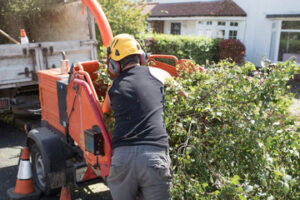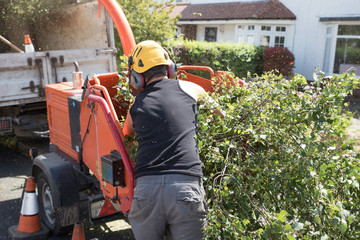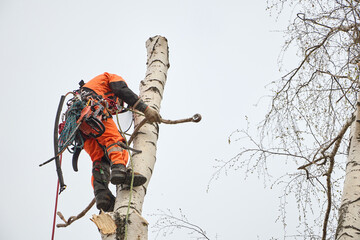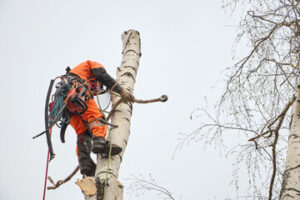Some trees may need to be removed because they pose a safety risk. Cracks that cover more than half of the trunk, hollowness, and damage to branches are also signs that it’s time to remove a tree.
Tree Removal Baltimore can be hired to take care of the whole removal process. This includes clearing two escape routes in case the tree falls in a dangerous direction.
A beautiful tree adds character to a yard and creates shade, but sometimes an old or unhealthy one needs to go. If you have an unwanted or damaged tree on your property, a professional tree removal service can help. It is an expensive process, however.
There are several factors that can impact the cost of removing a tree, including its size and location. The larger the tree, the more expensive it will be to remove. This is because the company will have to use larger equipment and take extra care to ensure it is removed safely. Additionally, it will need to haul away the debris.
If a tree is close to a house or power lines, it will also be more expensive to remove. It is more difficult for workers to access a tree that is in an awkward location, and it is much easier to damage other structures or utility lines during the removal process.
In addition, if a tree has been damaged by a storm or is starting to lean, the company will need to take special care to protect it from further damage. This can increase the cost dramatically. In some cases, a home owner’s insurance may cover the cost of removing a damaged tree, although it will likely require that a deductible be paid.
Gas prices are another factor that can influence the cost of tree removal. The company will need to buy fuel for their equipment and transport it to your property, and this can add up quickly.
Some companies charge by the hour, while others will quote a flat rate for the job. It is important to get multiple quotes before making a decision. You should also check the company’s credentials and license to make sure they are reputable.
Finally, if the tree is going to be split for firewood, the company will need to bring a log splitting machine, which will add an additional cost. Many people prefer to have this service included, so that they do not need to rent or purchase their own equipment.
Safety
Trees are beautiful additions to any landscape, but there comes a point in every tree’s life when it becomes a liability rather than an asset. In many cases, pruning or disease mitigation is not enough to save a dying or dead tree and removing it may be necessary. This is particularly true if the tree is located close to power lines or buildings, where it could fall and cause damage.
Performing tree removal is dangerous work and should only be done by trained professionals. Trying to take down a large or very tall tree yourself can lead to serious injuries to the person doing the removal, as well as damage to nearby property and even injury or death to passers-by.
Even smaller trees can be a safety hazard if they are growing too close to, or touching, structures like homes or cars. Similarly, if a tree’s roots are beginning to upheave or otherwise threaten foundations, it is likely time to have it removed.
Other signs that it is time to remove a tree include if it is leaning to one side, or sagging in the middle, as this can pose a risk of falling over and hitting property. If a tree has been damaged in a storm and is showing significant cracks or splitting in the trunk, it is also probably a good idea to have it removed.
Finally, if branches are hanging over power lines, this is another clear indication that it is time for the tree to come down. Branches that are in contact with, or close to, power lines require special training and equipment to prune safely, and can only be removed by licensed professionals. Doing so without the proper safety equipment can be very dangerous, and in the worst case scenario can result in expensive property damage, injury or death. Preparing for a tree removal is not too extensive, but there are a few things you should do to prepare. Make sure that your driveway and any surrounding areas are free of any vehicles or furniture, as this will make it easier for workers to get back and forth between their vehicles and the site. Also, if there is anything in the way of access to the site, let your tree removal company know in advance so they can plan accordingly.
Getting Started
Trees create shade, enhance the beauty of a home, provide habitat for wildlife and add value to your property. But, they can also become a safety hazard when they are dead or in poor health. A homeowner should always be on the lookout for signs that a tree is in trouble.
The best time to remove a tree is before the problem becomes serious. The first signs of a problem include a dead or dying tree (this includes branches that are dying back, hollowness, or rot). Another sign is a broken or damaged trunk. This may indicate that the tree is in poor condition and will be prone to damage from storms or high winds. Other causes of a potential problem are proximity to buildings, power lines or traffic areas. A tree that is growing too close to a house, barn or other structures needs to be removed before it causes damage.
If the tree is in a dangerous location it may be necessary to contact your homeowners insurance company to see if they will cover the cost of the removal. Many homeowner’s insurance policies do cover the costs of removing or fixing trees that have caused structural damage to a home or other structures on the property.
When you decide to hire a professional for the job it is important to prepare the area where the tree will be removed. Clearing the area of debris can make it easier to access the tree and will help prevent property damage during the removal process. The area should be cleared of items such as lawn furniture, potted plants and toys that could be blown away by the wind or crushed by falling debris.
Before starting a tree service business you should obtain an employer identification number (EIN) from the IRS. This will allow you to open a business bank account and will separate your personal and business finances. It will also make it easier for you to file your taxes. Finally, you will need to acquire all necessary licenses and permits. You can find out what types of licenses and permits you need by contacting your local or state business department.
Cleanup
After a tree has been removed, it’s important to make sure the area is cleaned up properly. This will help prevent accidents and ensure the safety of anyone on your property. It’s also a great way to keep the environment healthy. Debris from a tree can invite pests into the area and could even damage your home or other structures on the property.
In addition to cleaning up any debris, it’s a good idea to inspect the site for any structural damage that may have been caused by the fallen tree. You should also check nearby trees for any signs of damage from falling branches. If you notice any damage, it’s important to contact a professional right away.
A professional arborist can inspect the tree for any potential problems and assess the health of your yard. They can then recommend the best course of action to take. In some cases, a tree might need to be removed because it is leaning in a dangerous direction. This could cause damage to your house, driveway, deck or other structures on the property.
Once the tree is removed, it’s important to let the soil cure for a few years before planting anything in that area. Old roots can still be in the ground and it takes a long time for microorganisms to decompose them. If you try to plant something in that area before the roots have completely decomposed, it can be very difficult for the new plant to survive.
One of the most popular uses for a tree stump is to plant flowers or herbs on it. This is a fun way to use an otherwise ugly and unsightly stump. Another option is to grind the stump and use it as a planter for a garden bed. Just be sure to keep the soil moist and feed it regularly with compost or other organic materials.
It’s also a good idea to test the soil in that area. Sometimes the roots of a tree are so extensive that they affect the nutrient content of the surrounding soil. It’s a good idea to test the soil to see if it needs to be amended or fertilized with any special nutrients to support new plants and grass.


